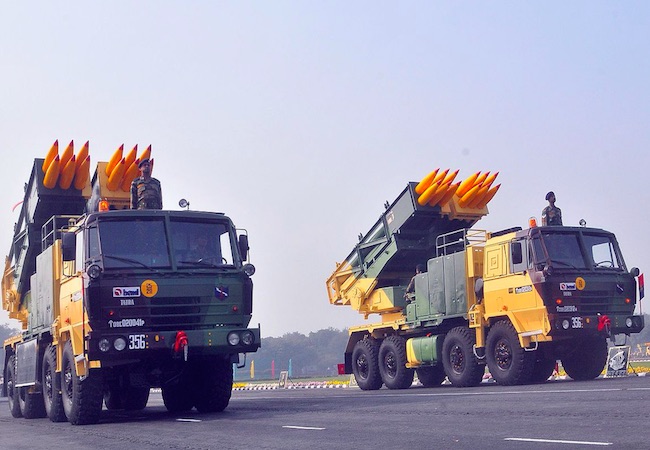
By Maimuna Ashra
Purposely, state officials say less about the country’s policy publically, but intermittently their factually incorrect statements, devious responses to news reports, silent inclination to a particular revelation and opaque annotations, let drop the unstated. In this contextual reflection, the nuclear South Asia is quite corresponding. Interestingly, any controversial thing against nuclear Pakistan grabs the attention among officials, academicians and media houses at national and international level, yet the controversies on Indian nuclear program receive noncommittal response or no-response especially from West. The questions arise: objectively, is the worrisome about Pakistan’s nuclear program is more levelheaded as compared to the India? If not, then why Western countries adopt a mute approach on India, while Pakistan remains in spotlight of criticism?
This question has been leveled up in the light of a series of five articles that appeared in the Public Integrity Magazine, a subsidiary of Center for Public Integrity, and Foreign Policy Magazine, a subsidiary of the Washington Post, on India’s civil and military nuclear program. The first three articles have been written by Adrian Levy exclusively while the last two, which predominantly deal with the security risks to Indian nuclear weapons, has been co-written with R Jeffry Smith who is a member of the Council on Foreign Relations. The first piece narrates about the trial of disease and ill deaths caused by uranium mining, which maintains that India’s nuclear industry is pouring its waste into a river which is making the nuclear workers and village residents living near mines ill after persistent exposure to unsafe radiation. In the second article, Adrian brings attention to the protests over the Russian built electricity generating nuclear reactors at Kudankulam. He recounts that ‘transparency and accountability’ are lacking at India’s largest nuclear park as the reactor is vulnerable to a tsunami and lists other safety problems.
The third article reported about a mysterious new ‘Thermonuclear City’ being built at a place in Karnataka called Challakere. The piece reveals, it will be thesubcontinent’s largest military-run complex of nuclear centrifuges, atomic-research laboratories, when it is completed probably sometime in 2017. Among the project’s aims is to expand the government’s nuclear research, to produce fuel for India’s nuclear reactors, and to help power the country’s fleet of new submarines. But another, more controversial ambition, according to retired Indian government officials and independent experts in London and Washington, is to give India an extra stockpile of enriched uranium fuel that could be used in new hydrogen bombs, also known as thermonuclear weapons, substantially increasing the explosive force of those in its existing nuclear arsenals.
The fourth article titled as ‘India’s nuclear explosive materials are vulnerable to theft, U.S. officials and experts say’, indicates the lax security at India’s nuclear installations. This piece appeared after a head constable killed his senior and two other members at the Madras Atomic Power Station at Kalpakkam. Experts depicted this episode as serious shortcomings in the country’s nuclear guard force, tasked with defending one of the world’s largest stockpiles of fissile material and nuclear explosives. Notwithstanding this shooting incident, the two experts’ based their concerns on a series of documented nuclear security lapses took place in last two decades in India. This article was again reproduced in Foreign Policy magazine with the title “Fast, Radioactive, and Out of Control”; highlighting the US officials’ and experts apprehensions that India is not adequately safeguarding its booming nuclear installations and material.
These concerns associated with Indian nuclear program received meek reaction. Surprisingly, a noteworthy hype was not generated in the mainstream media on the revelation of these reports. Conversely, Pakistan’s nuclear program remains in the headlines even in the absence of any documented nuclear security failure. Pakistan has been receiving proposals by the Western think-tanks, Stimson Center and Carnegie Endowment for International Peace to normalizing nuclear Pakistan, strongly worded editorials by New York Times (NYT) against Pakistan’s nuclear program and baseless concerns by Special US Representative for Afghanistan and Pakistan Richard Olson on the development of Pakistan’s missile program and its pursuit of nuclear systems. The reason that why US officials and media is not voicing concerns over India to avoid developments, that might lead to increased risk to nuclear safety and strategic stability, has also been highlighted in the last article by Adrian Levy and Jeffry Smith. They articulated that experts regarded the issue as urgent and Kalpakkam shooting alarmed Western officials who question whether India has adopted enough measures to safeguard its sensitive facilities and building blocks of a devastating nuclear bomb from being stolen by insiders with grievances, ill motives, or in the worst case, connections to terrorists. However, after conducting interviews of several US officials, they concluded that ‘Washington is not forcing India for rapid reforms. The Obama administration is instead going to avoid any friction that might disrupt a planned expansion of U.S. military sales to India.’
Evidently, despite of all the reasoning, the oft-repeated cliché to associate nuclear Pakistan with terrorism and propose unfavorable options to secure its nuclear program is habitual and persistent in the broader strategic calculus, while the existent threats beyond this nuclear cliché are deliberately overlooked. It will be an idiocy to assume this an isolated or random activity but it is a part of an orchestrated plan. India has a substantial role to play in the US strategic thinking; consequently other states are intentionally being treated in lieu of US’ interests.




